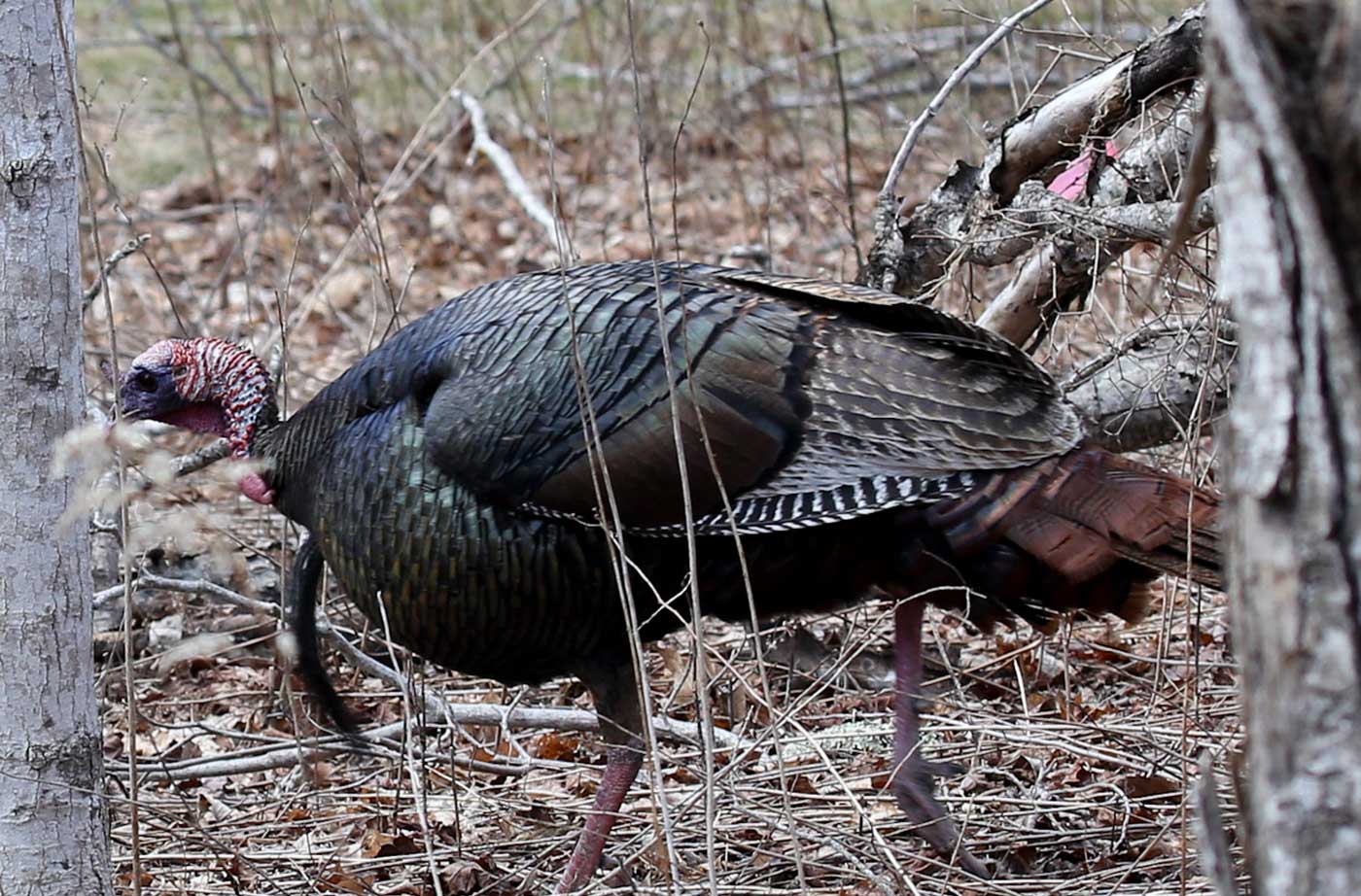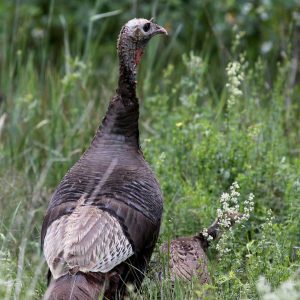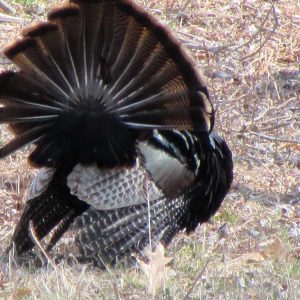
Turkey at Otter Cliff, Acadia National Park (photo by David Small)
To birders like us and, hopefully, you, the most well-known bird in the world may seem to be the Steller’s Sea-Eagle, given what a media darling it’s become.
Well, it’s not. Neither is it a hummingbird, crow, peacock, the Perplexing Scrubwren, nor is it that famous, non-existent bird, the “seagull.”
It is, in fact, the turkey.
With Thanksgiving having recently come and gone, you may think first of the domestic turkey. Lineages of those birds, like its even more mundane cousin, the domestic chicken, are derived originally from wild, untamed creatures whose ecological and evolutionary path intertwined with humans to change both us and them.
Supporters of the Natural Resources Council of Maine very likely recall that the Wild Turkeys we see so often now at our bird feeders or across farm fields had become nearly extinct. They would likely have gone the way of the Carolina Parakeet and Great Auk if extreme conservation measures had not been taken to bring their populations back.

Turkey in Sunkhaze Meadows National Wildlife Refuge (photo by David Small)
While researchers continue to study the stories of both domesticated chickens and turkeys, given the season, we thought it only fitting that we consider the twists and turns that have brought the turkey to our tables these cool fall days, at the same time many of us are watching flocks of Wild Turkeys feasting under the bird feeder in the backyard.
Despite the name “turkey,” the world’s only two species of turkey both originate here in the Americas. The Ocellated Turkey has a rather restricted range, from the Yucatan peninsula of Mexico into adjoining regions of Guatemala and Belize. The species we know officially as the Wild Turkey has a wide range, from the southern edge of Canada across most of the U.S. into central Mexico.
Analyses of archeological remains from early Indigenous settlements, and of ancient DNA from and measurements of turkey bones found in those settlements, has shown that early Indigenous people domesticated turkeys from the wild several thousand years ago. Indigenous peoples in what is now the southwestern U.S. kept turkeys perhaps more for ceremonial use, including for their prized feathers, than for food, initially. Similarly, Indigenous peoples in Mexico also domesticated wild turkeys.
The early Spanish colonizers must have been astonished to see what to them must have looked like some version of a massive chicken being kept by the Indigenous people they encountered and eventually brutalized. Beginning in the early 1500s, the Spanish brought some of these turkeys with them back to Spain, and people began to successfully rear them and to build larger farmed populations.

Turkey’s tailfeathers in Falmouth (photo by Linda Woods)
Turkey farms spread from country to country across Europe over time. At some point, some of the birds were imported into England. During that time, various items that came into England from faraway places were often labeled as “Turkey” this or “Turkey” that. It has been suggested that these unusual, imported birds were categorized in this same way, and the name stuck.
A related version of the story suggests that the importers of the birds were people known in England at the time as Turkish traders. Either way, this decidedly Indigenously domesticated and geographically American bird came to be called by a name now associated with a completely unconnected part of the world.
We can’t resist including this piece as well: In many parts of the world, the birds we call turkeys are known in various languages by what is translated to mean “Indian chickens.” This is thought to be a historical leftover from the fact that the earliest Spanish explorers to the Americas thought that they had found India. Hence, the chicken-like birds they brought back from Mexico were called “Indian chickens.” A translation of that name is still used in many countries to refer to our very own turkey.
As for the turkey, early settlers to New England apparently brought some of these domesticated turkeys with them to New England, where they were then surprised to find wild versions of the same birds throughout the region! In essence, they may have had the same experience that we have today when many of us enjoy a family meal that includes a cooked domestic turkey while a flock of Wild Turkeys struts about in the woods and fields outside.
Happy Holidays!
—Allison and Jeff Wells











In Turkish language turkey bird is called a HINDI which literally means Indian. This is in line with your theory that original birds came from where people thought was India.
Fascinating. Thank you for sharing that additional clue to the mystery!
Allison and Jeff